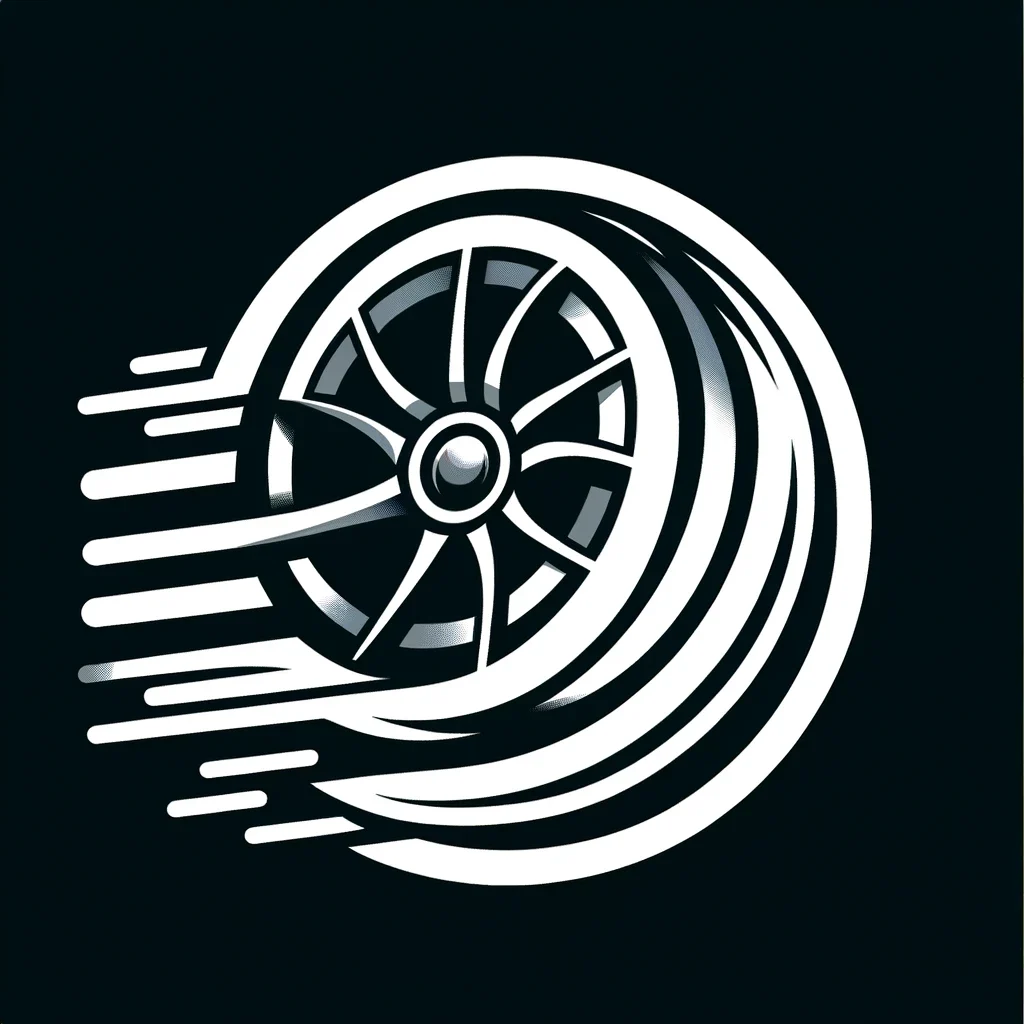Imagine driving down the street, enjoying the smooth ride of your car. Have you ever wondered about the evolution of the 15 inch rim design that contributes to your comfortable journey? In this article, we will take a closer look at the fascinating history behind the development of 15 inch rims and how they have evolved over time to enhance both the performance and aesthetics of your vehicle. From the early days of basic steel rims to the sleek and stylish alloy rims of today, join us as we explore the captivating journey of 15 inch rim design.

This image is property of images.unsplash.com.
Early Rim Designs
The introduction of car rims
Car rims have come a long way since their inception, and their design has evolved significantly over the years. In the early days of automobiles, rims were simple and primarily made of wood. These wooden rims provided the necessary support for the tires and were relatively lightweight. However, they lacked the strength and durability required to withstand the demands of modern driving conditions.
The first 15 inch rim designs
As cars became more advanced, the need for stronger and more reliable rim designs became evident. The first 15 inch rim designs emerged as a response to this demand. These rims were typically made of metal, which offered increased strength and durability compared to their wooden counterparts. The 15 inch size became popular due to its balance between ride comfort and overall vehicle stability.
Design features of early rims
Early 15 inch rim designs featured a simple, yet effective, construction. They consisted of a circular shape with a centrally located hole for mounting the rim on the axle. The rims were often equipped with spoke patterns for added strength and stability. These early designs laid the foundation for future advancements in rim technology and set the stage for the development of more innovative and functional designs.
Advancements in Material and Manufacturing
Transition from wooden to metal rims
The transition from wooden rims to metal rims was a significant milestone in rim design evolution. Metal rims offered numerous advantages over their wooden counterparts, including increased strength, durability, and resistance to weather conditions. This transition also allowed for the development of more complex designs and introduced the use of new materials like steel.
The use of steel in rim construction
Steel quickly became the material of choice for rim construction due to its exceptional strength and durability. Steel rims were capable of withstanding the rigors of everyday driving and provided a stable and reliable platform for the tires. The use of steel also allowed for more intricate designs, as it could be shaped and formed into various styles and patterns.
Improvements in manufacturing techniques
With the introduction of metal rims, advancements in manufacturing techniques followed suit. Modern manufacturing methods allowed for more precise and consistent production of rims, contributing to their overall quality and reliability. These improvements in manufacturing techniques paved the way for the mass production of rims and made them more accessible to a wider range of consumers.
Functional Design Changes
Introduction of tubeless rims
The introduction of tubeless rims revolutionized the tire industry and had a profound impact on rim design. Tubeless rims eliminated the need for an inner tube, which reduced the risk of punctures and blowouts. This innovation increased safety and provided a more reliable and stable driving experience. Tubeless rims also improved fuel efficiency and offered better handling characteristics.
The development of bead retention features
Bead retention features became a significant consideration in rim design as they ensured the tire remained securely attached to the rim. These features included raised ridges or channels that helped prevent the tire from slipping off the rim during sudden maneuvers or impacts. The development of bead retention features enhanced safety and stability, particularly during high-speed driving or off-road adventures.
Enhancements in rim strength and durability
Rim designers continuously sought ways to improve the strength and durability of their products. Advanced manufacturing techniques and the use of high-quality materials allowed for the development of rims that could handle the demands of modern driving conditions. Rim strength and durability were crucial in ensuring optimal performance, stability, and longevity of both the rim and the tire it supported.
Aesthetic Changes in Rim Design
Evolution of spoke designs
The evolution of spoke designs played a significant role in the aesthetic appeal and overall character of rims. Spokes started as functional elements, providing added strength and stability to the rim structure. Over time, they became more ornate and intricate, turning rims into works of art. Manufacturers began experimenting with different spoke patterns, such as the classic cross-spoke design or the more modern split-spoke designs, offering consumers a wide range of options to suit their personal style preferences.
The introduction of alloy rims
Alloy rims brought a new level of sophistication and aesthetic appeal to rim design. Made from a combination of aluminum and other metals, alloy rims offered several advantages over traditional steel rims. They were lighter, which improved fuel efficiency and handling, and they also provided better heat dissipation. Alloy rims became popular due to their sleek and modern appearance, making them a favorite among car enthusiasts.
Innovative rim finishes and colors
In an effort to cater to individual tastes and style preferences, rim manufacturers began offering an array of innovative finishes and colors. Consumers could now choose rims with chrome plating for a sophisticated and luxurious look, or opt for matte black or gunmetal finishes for a more aggressive and sporty appearance. This level of customization allowed car owners to personalize their vehicles and make a statement on the road.

This image is property of images.unsplash.com.
Role of Technology in Rim Design Evolution
Computer-aided design (CAD) in rim development
The advent of computer-aided design (CAD) revolutionized rim design by allowing engineers to create and modify rim designs digitally. CAD software facilitated the exploration of complex shapes and structures, ensuring optimal performance, strength, and aesthetics. This technology greatly accelerated the design process and improved the accuracy and efficiency of rim production.
Finite Element Analysis (FEA) for improved performance
Finite Element Analysis (FEA) became a valuable tool in rim design, enabling engineers to simulate real-world conditions and evaluate the performance of rims under different scenarios. FEA allowed for the optimization of rim designs by identifying potential weaknesses, stress points, and areas of improvement. This technology played a crucial role in enhancing rim strength, durability, and overall performance.
Integration of smart features in modern rims
As technology continued to advance, rims started incorporating smart features to enhance the driving experience. Smart rims integrated sensors and connectivity options, allowing for real-time monitoring of tire pressure, temperature, and other performance parameters. These intelligent features not only improved safety but also provided valuable data for vehicle maintenance and performance optimization.
Safety and Performance Innovations
Advancements in rim braking surfaces
The evolution of rim braking surfaces significantly impacted safety and performance. Early rims had rim brakes that relied on direct contact between the braking mechanism and the rim itself. However, advancements in rim designs introduced improved braking surfaces, such as machined sidewalls or disc brake-compatible rims. These innovations provided better braking performance, increased heat dissipation, and improved overall stopping power.
The impact of rim design on tire performance
Rim design plays a vital role in tire performance. Factors like rim width, shape, and materials used can affect tire stability, grip, and even fuel efficiency. Modern rim designs take into consideration tire profiles and characteristics, aiming to enhance the tire’s contact patch with the road, reducing rolling resistance, and improving traction. The compatibility between the rim and tire is crucial for optimal performance and safety.
Introduction of rim stiffness optimization
Rim stiffness optimization has become a key consideration in rim design to improve performance and handling. By strategically shaping and reinforcing specific areas of the rim, engineers can precisely control the stiffness and compliance characteristics. This optimization allows for better energy transfer, reducing the loss of power during acceleration or cornering. Moreover, it improves overall ride quality and stability, ensuring a more enjoyable and responsive driving experience.

This image is property of images.unsplash.com.
Customization and Personalization Trends
Growing demand for aftermarket rim options
The demand for aftermarket rim options has been steadily increasing, as car owners seek to personalize and enhance the appearance of their vehicles. Aftermarket rims offer a wide variety of styles, sizes, and finishes, giving consumers the opportunity to create a unique look that reflects their personal taste and style. This trend has contributed to the overall growth of the rim industry, providing consumers with a diverse range of options beyond the factory-installed rims.
Evolution of rim size, width, and offset preferences
Over time, rim sizes, widths, and offsets have evolved alongside changing automotive needs and consumer preferences. Larger rim sizes, such as 17 or 19 inches, have become popular for their sporty and aggressive appearance. Wider rims offer improved stability, especially for high-performance vehicles, while offset adjustments allow for a more customized fitment and enhanced aesthetics. These evolving preferences have driven the continuous innovation and expansion of rim options available to consumers.
Unique finishes, patterns, and branding
Car owners are increasingly seeking unique finishes, patterns, and branding options for their rims. From custom paint jobs to intricate designs and patterns, rims have become a canvas for personal expression and style. Manufacturers have responded by offering a wide range of finishes, including chrome, polished, brushed, or even specialized coatings like powder coat or ceramic finishes. The availability of unique finishes and branding options allows individuals to make their vehicles stand out and reflect their individuality.
Specialized Rim Designs
Racing-specific rim designs
Racing-specific rim designs have been developed to meet the demands of high-performance racing vehicles. These rims are typically lightweight, constructed from advanced materials such as carbon fiber or forged aluminum, and feature specialized aerodynamic designs. Racing rims are engineered for maximum strength, stiffness, and heat dissipation, ensuring optimal performance on the track. They often incorporate quick-change mechanisms to facilitate fast tire changes during pit stops.
Off-road and adventure-ready rims
Off-road and adventure-ready rims are designed to withstand the rigors of off-road driving and provide enhanced durability and performance. These rims are typically made from heavy-duty materials like steel or aluminum alloy and feature reinforced construction. They often have wider widths to accommodate larger off-road tires and may incorporate beadlock technology to prevent tire bead separation during extreme off-road conditions. Off-road rims also offer increased ground clearance and improved impact resistance.
Special rims for electric vehicles
As the popularity of electric vehicles (EVs) continues to rise, specialized rims tailored to the unique needs of these vehicles have emerged. EV-specific rims often focus on lightweight construction to optimize range and efficiency. These rims are designed to reduce aerodynamic drag, improve battery cooling, and enhance regenerative braking performance. Additionally, EV rims may incorporate smart features to provide real-time data on energy consumption, battery levels, and charging status.
Environmental Considerations in Rim Design
Shift towards lightweight and eco-friendly materials
Environmental consciousness has influenced rim design, leading to a shift towards lightweight and eco-friendly materials. Manufacturers are exploring alternatives to traditional materials like steel, such as aluminum alloys, carbon fiber composites, or recycled materials. Lightweight rims contribute to improved fuel efficiency, reducing emissions and overall environmental impact. Furthermore, the use of eco-friendly materials aligns with efforts to minimize the carbon footprint associated with rim production and disposal.
Designs for improved aerodynamics and fuel efficiency
Rim designs are increasingly focused on improving aerodynamic performance to enhance fuel efficiency. These designs feature streamlined shapes, reduced drag coefficients, and optimized spoke patterns. By reducing turbulence and minimizing air resistance, aerodynamically efficient rims help improve vehicle fuel economy, ultimately benefiting the environment. This emphasis on aerodynamics also enhances driving stability and reduces wind noise.
Recyclable and sustainable rim materials
Manufacturers are adopting more sustainable practices by utilizing recyclable and sustainable rim materials. This shift allows for the repurposing of old or damaged rims, reducing waste and conserving valuable resources. Additionally, initiatives to source materials responsibly and reduce the use of harmful substances in rim production contribute to a more environmentally friendly manufacturing process. Sustainable rim materials address growing concerns about environmental impact and promote a greener and more sustainable future.
Future Trends in 15 Inch Rim Design
Integration of advanced sensors and connectivity
The future of 15 inch rim design will likely involve the integration of advanced sensors and connectivity features. Rims may incorporate sensors to monitor tire pressure, temperature, tread wear, and even road conditions. These sensors would provide real-time data, enhancing safety, performance, and maintenance. Furthermore, connectivity features could enable rim-to-vehicle communication, allowing for seamless integration with other vehicle systems and providing valuable insights for autonomous driving technologies.
Advancements in rim weight reduction
Continued advancements in rim weight reduction will be a key focus in future designs. Innovative materials, manufacturing technologies, and design techniques will allow for the creation of even lighter rims without sacrificing strength or performance. Reduced rim weight not only improves fuel efficiency and handling but also minimizes the unsprung weight of the vehicle, resulting in better overall dynamics and responsiveness.
Innovations in rim performance and safety
The future of 15 inch rim design holds exciting possibilities for further innovations in performance and safety. Rims may incorporate advanced features such as active damping systems or even intelligent load-bearing structures. These innovations aim to optimize road contact, improve handling, and enhance vehicle stability. Additionally, advancements in material science and manufacturing techniques will contribute to the development of rims with superior impact resistance, reducing the risk of damage and enhancing occupant safety.
As the world of automotive technology continues to evolve, so does the design of 15 inch rims. From their humble beginnings as wooden structures to the advanced and sophisticated designs we see today, rims have undergone significant transformations. Innovations in materials, manufacturing techniques, technology integration, and customization have shaped the evolution of 15 inch rim designs. With a future focused on sustainability, improved performance, and cutting-edge features, the development of rim design shows no signs of slowing down. So, whether you’re looking for enhanced safety, increased performance, or simply a style statement, the world of 15 inch rims has something to offer for every car enthusiast.

